Before: A Charmless Space
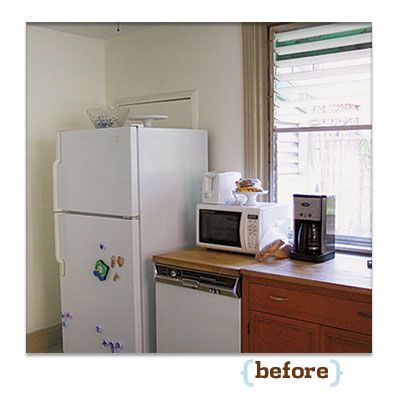
Sometimes the best way out of a bad kitchen is to salvage what you can and recycle the rest. Bronwyn Reice and Kenny Grono, who run an eco-oriented design/build firm out of their Victorian-era rowhouse in Philadelphia, loved the bare-bones kitchen’s big windows and the breakfast room’s built-in hutch but couldn’t wait to connect the two spaces to make a single, more stylish, more functional space. Keep reading to see how they did it.
After: Eco-Kitchen Remodel
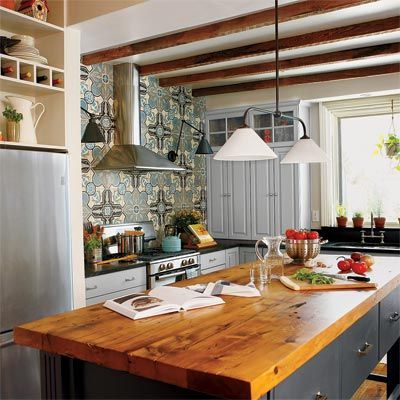
Grafted onto the house circa 1900, the kitchen was no fun in winter (“You could feel cold air blowing through one of the cabinets,” recalls Bronwyn), and its ancient wiring and lack of counter space inspired odd daily routines—like setting the coffee grinder down on the radiator to plug it in to one of only two outlets. The space was short on counter space, bereft of charm.
Shown: Patterned cement floor tiles from Avente create a colorful, hard-wearing backsplash. The range shown is from Bosch, island light fixture is from Restore, and flush-mounted ceiling fixture is from Shades of Light.
Backsplash Beauty
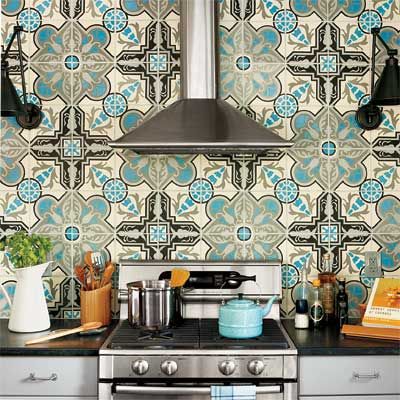
So, working as a team, the couple tore out the cabinets, sink, appliances, and dividing wall—selling what they could on Craigslist and taking the rest to a recycling center—then opened walls as needed for insulation, plumbing, and wiring.
Shown: A pair of wall-mounted task lights with flared shades echoes the vent hood, which is from Faber.
Smart Storage
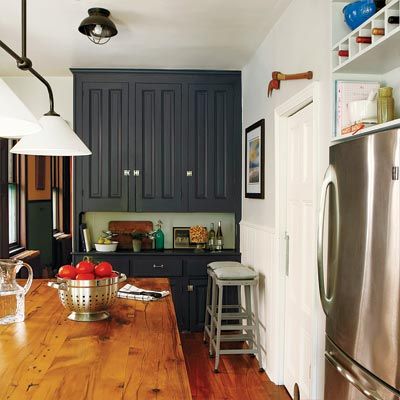
In went paneled cabinets that echo the existing hutch, black walnut floors, a cement-tile range wall, soapstone counters, a table island topped with reclaimed fir, energy-efficient appliances, and LED lights. Says Bronwyn, “In the end, we got period charm and contemporary function.”
Shown: The original hutch was updated with low-VOC paint and nickel latches and pulls. The fridge here is from GE.
Plank Flooring
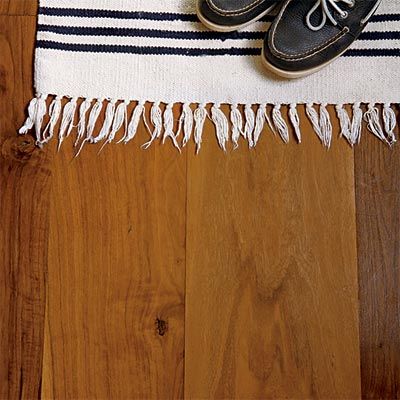
Black walnut planks, from Elmwood Reclaimed Timber, in random widths now unite the space underfoot.
Shown: Floors were finished with Safecoat Polyureseal
In With the Old
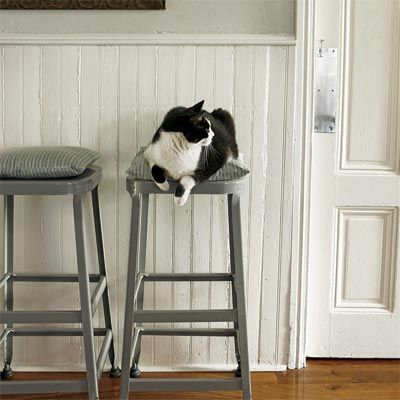
The paneled door to the dining room was a keeper, as was the original breakfast-room wainscot.
Homeowner Tip: “Salvage interior doors whenever you can. They generally have lots more character than new ones.” —Kenny Grono, Philadelphia
Show Off With Shelves
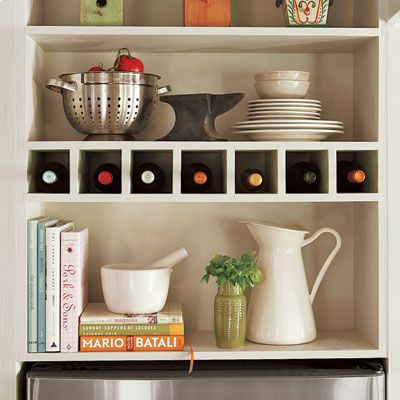
Display shelves in the upper part of the fridge cabinet hold wine, cookbooks, and decorative items.
Island Living
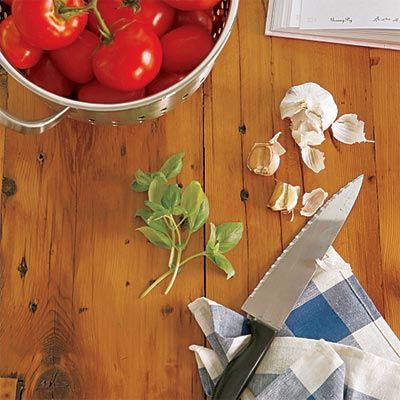
The island gets its character from the reclaimed fir’s rich patina—it’s finished with mineral oil.
Shown: The island is from Buckminster Green.
Everything But the Sink
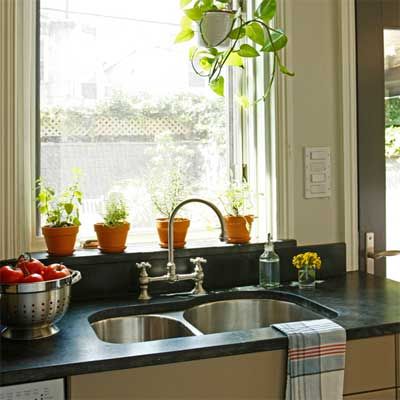
The sink is from Elkay, the faucet is from Cifial USA, and the countertop is from M. Teixeira Soapstone.
Making Room
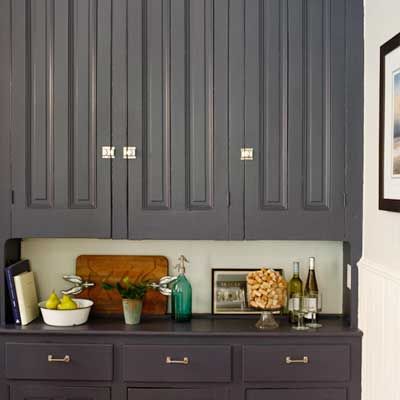
Cabinets are from UltraCraft Co. and recessed LED lights are from Sailor Sams.
Task Lighting the Way
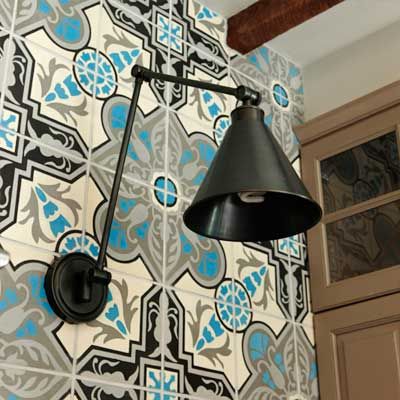
Wall sconces are from Hudson Valley Lighting Co.
Floorplan: Before
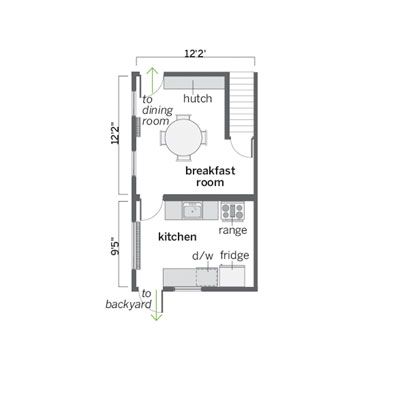
The kitchen, a circa 1900 add-on, was drafty and lacked prep space.
Floorplan: After

Annexing the breakfast room created space for an island and countertops along two walls of the now spacious galley.
1_ Removed the wall separating the kitchen and breakfast room.
2_ Added an island measuring 3 by 8 feet for extra prep space.
3_ Moved the sink to the rear wall, under a new energy-saving casement window with views of the backyard.
4_ Reoriented the basement door to create a seamless wall next to the fridge cabinet.
5_ Exposed rafters in the existing kitchen space, adding 2-inch-thick rigid-foam insulation and drywall between them.
6_ Relocated the range to a side wall and added a hood with a stovepipe narrow enough to fit between rafters.
